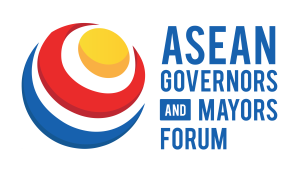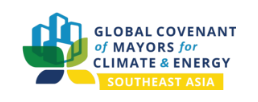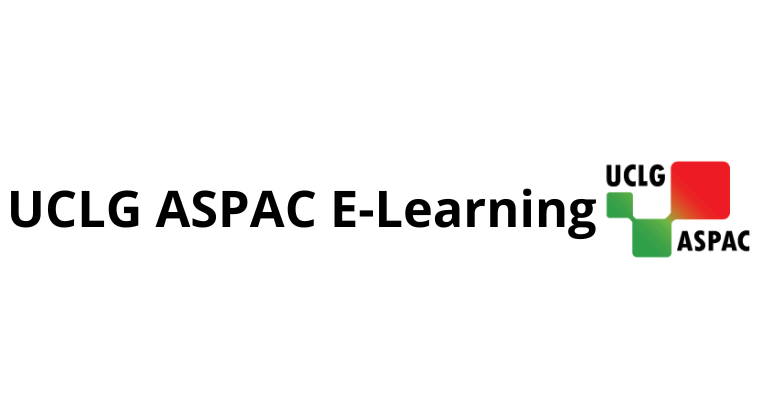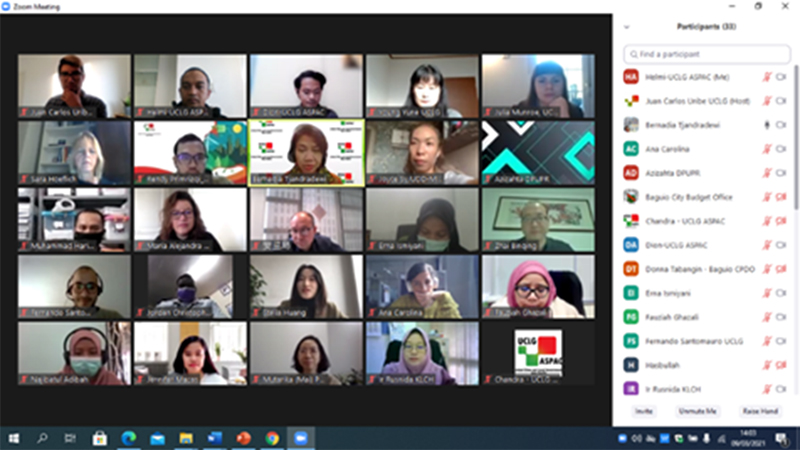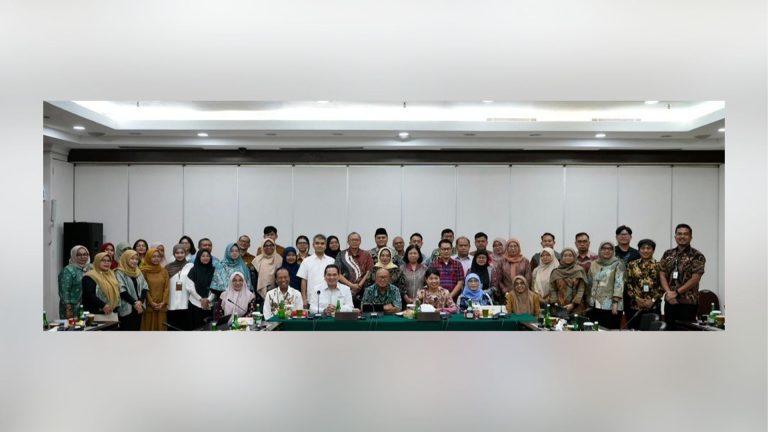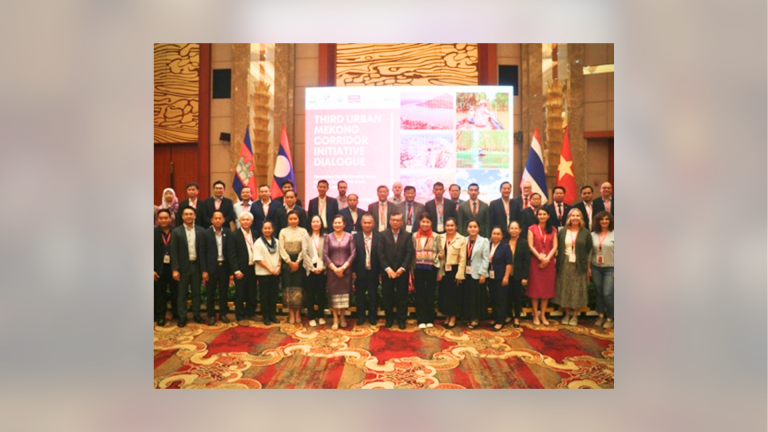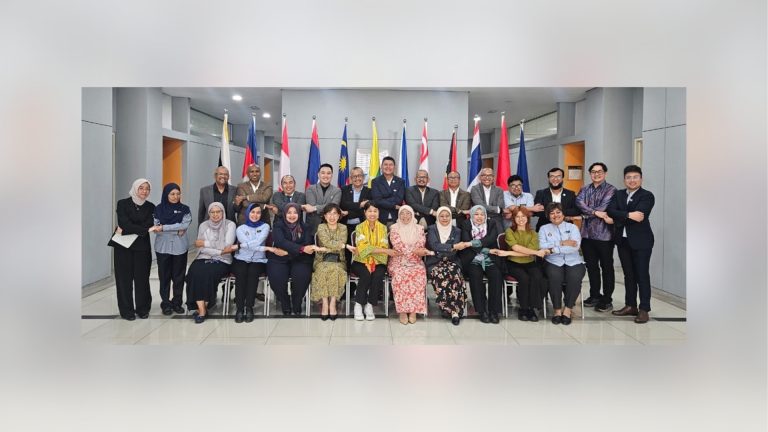9-11 March 2021 | UCLG ASPAC continues its commitment to support local governments in the Asia-Pacific region in enhancing their cities resilience through a Training of Trainers (ToT) that involved 30 trainers from cities and associations of the four sub-regions of Asia and the Pacific. The ToT was conducted in collaboration with the Learning Team of UCLG World and contributed to the new development of Learning Module 1 on the localisation of the Sendai Framework, developed by UCLG World in partnership with the United Nations Office for Disaster Risk Reduction (UNDRR) and the United Nations Human Settlements Program (UN-Habitat). The module aims to support local governments n the creation of an enabling environment for disaster risk reduction (DRR) and resilience building. It also aims to foster learning and raising awareness about the links between local action and the achievement of the global agendas, particularly that of the Sendai Framework for DRR.
About The Three-Day ToT
The ToT brought up the overall principles of city resilience as well as its connections with the Sustainable Development Goals (SDGs) and Global Agenda. It highlighted the fundamentals of resilient governance and development and engaged participants (trainers) through activities/exercises for dynamic, engaging, collaborative, and reflective learning methodologies.
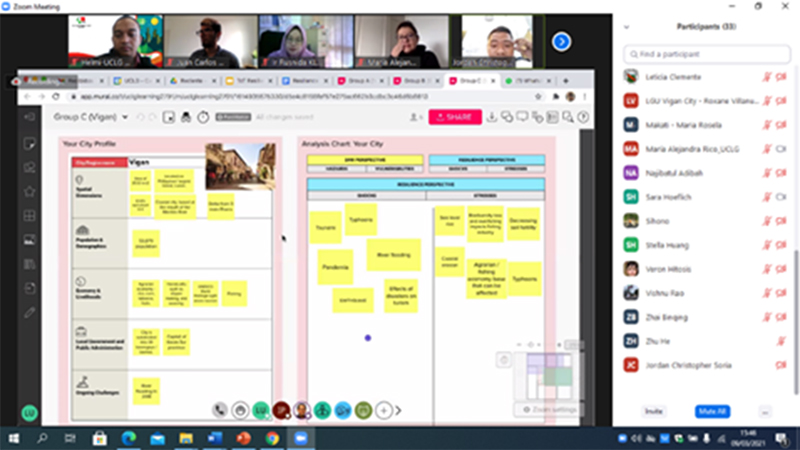
DAY 1 – Localising the Sendai Framework to Achieve Resilient Cities and Territories

On the first day, participants were first exposed to the risk and resilience lecture and exercise. They were facilitated to identify the hazard, exposure, vulnerability, and capacity to be able to define risk. In the exercise session, they were grouped to identify shocks and stresses, based on the example of city cases.
The Sendai Framework for DRR and the SDGs with four priorities and seven targets was then introduced. The exercise saw active participation and interaction of local governments in identifying risk and hazards from the case of Baguio, Yogyakarta, and Makati City.
Participants, who were mostly experts of various backgrounds, such as Planning, Disaster Management, and Finance Local Agencies, also identified the SDGs target with potential hazards and risks from the three sample cities including the type of vulnerability.
DAY 2 – Fundamentals of Resilience Building and DRR for Local and Regional Governments
The second day of the ToT examined the fundamental elements of building resilient cities and territories effectively. Discussions went beyond disaster risk reduction and also introduced various tools for resilience-based sustainable urban development in line with LRGs on-going commitment to inclusive, resilient, and sustainable communities. It was organised based on three of the four priority lines for actions of the SFDRR, with discussions focusing on multi-level and multi-stakeholder disaster risk governance, risk and resilience assessment, financing mechanisms for resilience, and DRR policies, strategies, and action plans. In group activities, participants practised a “Futurilities” Dynamic: a governmental role-play game consisting of the City Mayor, Head of Employment, Head of Environment, Head of Health Services, and Head of Finance. All participants must actively discuss to express their opinions of each role, to choose the future plot of their role city.
DAY 3 – Fostering an Enabling Environment through LRG Associations

The third day of ToT focused on underlining and strengthening the crucial role that Local and Regional Government Associations (LRGAs) play in localising SFDRR and supporting the building of resilient cities and territories. LRGAs can support the process of resilience building and DRR at local and regional levels through five key lines of action: (1) increasing awareness on risk and resilience; (2) undertaking advocacy; (3) bridging the governance gap; (4) increasing the capacity of LRGs; and (5) monitoring local and regional actions. Subsequently, participants were facilitated to do exercise regarding post-disaster governance. The exercise aimed to identify and discuss the most crucial task that the local team needs to do, different stakeholders engaged in disaster response, and the human dimension of the local administration, based on the Post-Tsunami case in Aceh.
UCLG ASPAC thanks all local governments participating in the ToT. We are currently coordinating with the UCLG Learning Team to further enhance the capacity of local governments on city resilience through the development of Module 2 which is targeted to complete this year.ently coordinating with the UCLG Learning Team to further enhance the capacity of local governments on city resilience through development of Module 2 that is targeted to complete this year.

